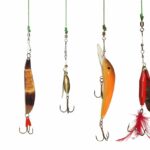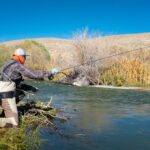Although many new anglers don’t realize it, a sinker plays a fundamental role in your success, particularly when river fishing. With the variety of designs and styles available, it can be overwhelming to determine the best sinker for river fishing, but we aim to help clear that confusion.
Several sinkers on the market are fantastic for river fishing, including pyramid, egg, no-roll, dropper, and bank sinkers. More important than a sinker’s brand is its purpose, the target fish, and what feels best for the angler, i.e., personal preference.
While there is no “supreme sinker,” several features make a sinker well-suited to river fishing. The target species, environmental conditions, and fishing technique are critical when selecting a sinker. However, there are some sinkers better suited to specific tasks.
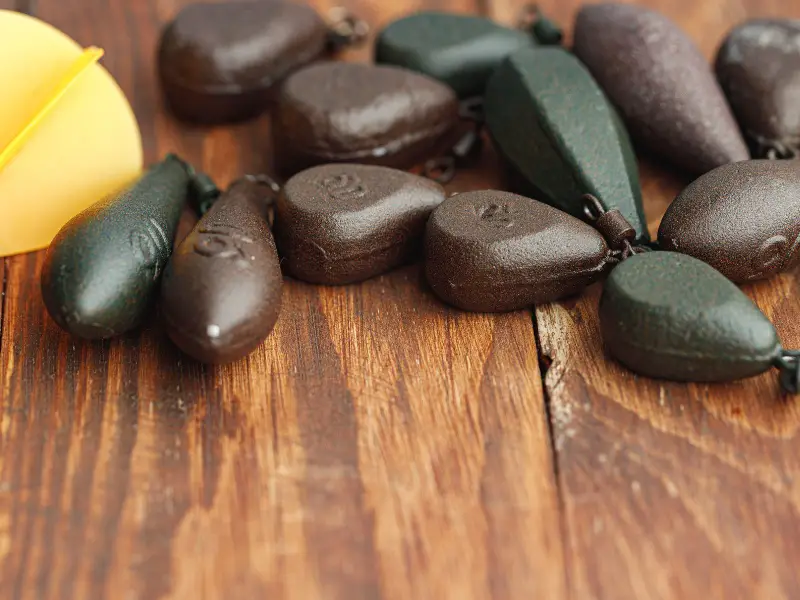
The Best Sinkers For River Fishing
River fishing is incredibly varied. Some rivers have rocky bottoms; others are mud. While some rivers are wide and slow-moving, others have strong currents. The environment, what fish species you’re targeting, and your fishing technique are fundamental to which sinker is best for the situation.
Below we’ll investigate which sinkers are best in certain scenarios.
The Best Sinkers For Movement In A River
Sometimes movement with the current is a good idea while fishing. When using live bait, most anglers prefer small amounts of movement; however, preventing your line from tangling or getting caught up on rocks/structures is essential.
Some of the best sinkers for promoting controlled movement include:
Egg Sinkers
These common, affordable sinkers are egg-shaped (hence the name). Anglers using Carolina and Knocker Rigs frequently use egg sinkers because they facilitate the movement of live bait.
One drawback is that because of their rolling nature; they may tangle your line while moving. Egg sinkers are also fantastic in rocky substrates as the sinker rolls over and around rocks without becoming snagged.
Coin/Pancake Sinkers
Coin (or pancake) sinkers are flattened disks with an indent in the middle on both sides. They move slowly along the substrate and have the advantage of not twisting (water can’t flip them over), so they won’t tangle your line.
These sinkers are ideal for stronger currents while allowing some movement.
Bell Sinkers
Thanks to their bell shape, these sinkers are astute at pulling your hook set to the floor. Their rounded design helps them not get caught on rocks/structures as they drag underwater.
The Best Sinker For Strong River Currents
A pyramid sinker is one of the best for strong flowing river currents.
Thanks to their pointed tip, these sinkers dig into the river bed like an anchor. The four sides that slope from the wide base to the pointed tip allow water to pass around the sinker without moving it (even though it lies on the side).
Pros
- Resists tumbling and other movements
- Great for sand and muddy substrate
- Great casting and quick sinking capabilities
Cons
- They don’t hold their position as well as some variants
- Their shape makes reeling in challenging
Alternatives to the pyramid are frog tongue sinkers (which hold better in rougher conditions but are more expensive) and breakaway sinkers (they have spikes that hook into the substrate but may get stuck in rocky areas and are difficult to retrieve), like the sputnik.
The Best Sinker For Bass Vs. Catfish In A River
Bass and catfish are some of the most popular river fish. However, the methods for catching these fish vary considerably.
The Best Sinker For Bass Fishing On A River
When bass fishing, many anglers opt for bullet sinkers, which slide up and down the line. Bass move from the bottom to the top of the river column, frequently around structures and submerged vegetation.
A bullet sinker fits snuggly on a line and, thanks to its shape, doesn’t snag easily on obstacles. The added benefit of these sinkers is they keep the bait stationary in the water column, usually suspended above the floor.
An alternative is using a split shot sinker; their versatility makes it ideal when you require a slight weight increase to steady your line but don’t need a heavy sinker. They are ideal for shallow water and fishing with bobbers (floats).
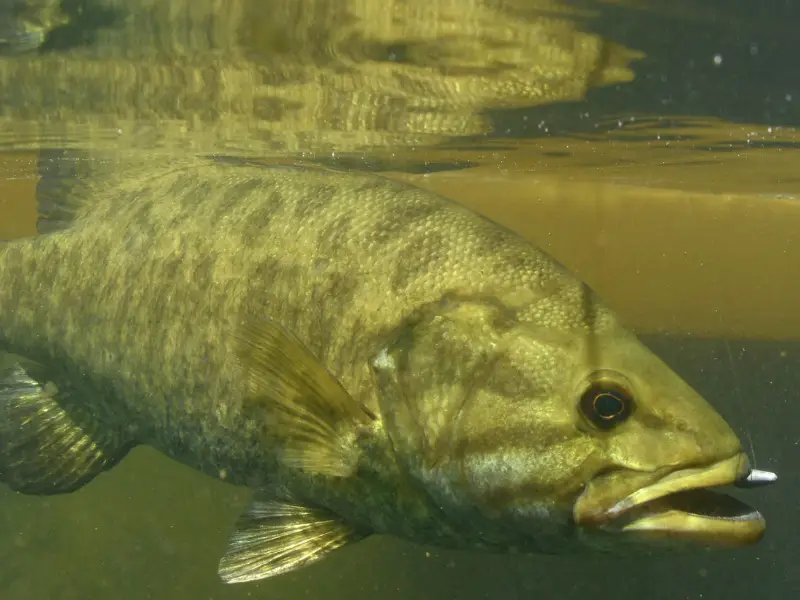
The Best Sinker For Catching Catfish In A River
Catfish are usually benthic feeders (they spend most of their time on the riverbed), so you’ll need a sinker that takes your bait to the bottom and holds it there.
While some movement is preferable, too much might take the bait away from a hiding cat. Many anglers opt for a “no-roll” sinker. Similar to a pancake sinker, these are tear-drop shaped. They are excellent in stronger currents.
Alternatively, bell sinkers are useful if you want some movement along the bottom (when trolling for catfish).
The Best Sinker For Drop Shots
You’ll want a bank sinker when you graduate from cast and retrieval fishing to attempting techniques like drop-shots.
Thanks to their tear-drop shape, they are aerodynamic and can move underwater (but not as easily as an egg sinker).
The Best Sinker For Beginner River Anglers
If you’re starting, you don’t want to learn how to tie a thousand knots yet.
Enter the split shot sinker! These marvelous little weights are practical and convenient (you don’t even have to tie them onto the line); crimp one on the line, and “bam!” you have weight.
While it may take some getting used to planning where the sinker should go, their versatility and practical nature make them a winner for beginners and pros alike.
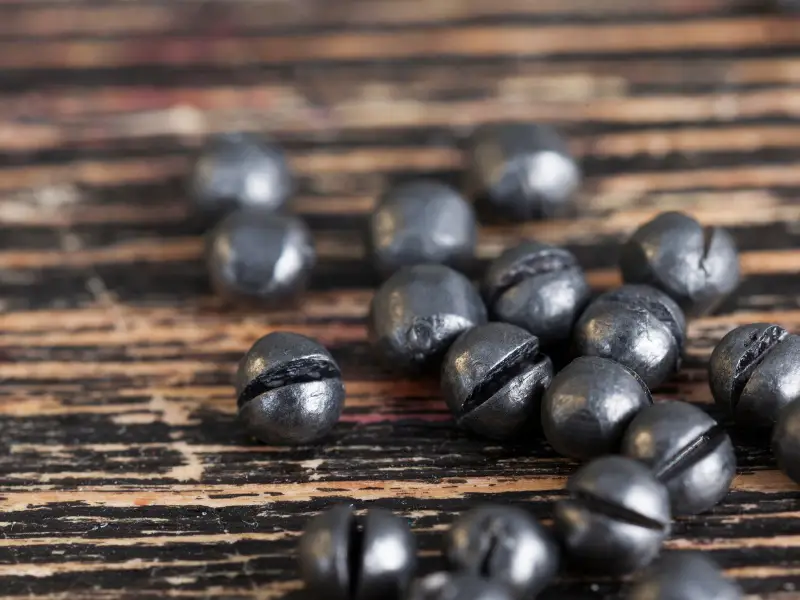
Factors Influencing Which Sinker Is Best For River Fishing
Depending on the environmental factors, the fish you’re targeting, your fishing technique, and other variables may make a certain sinker superior or inferior.
Some of these determining factors include the following:
Current Strength And Environmental Conditions Impact Which Sinker Is Best
When selecting a sinker, it is essential to factor in the substrate, the obstacles and structures, and how fast or slow the current is.
Flat sinkers and those with protrusions are ideal for stronger currents, while round/cylindrical sinkers are essential for small, controlled movement.
Bullet-shaped sinkers that hug the line are necessary if you’re in a rocky environment or fishing close to structures.
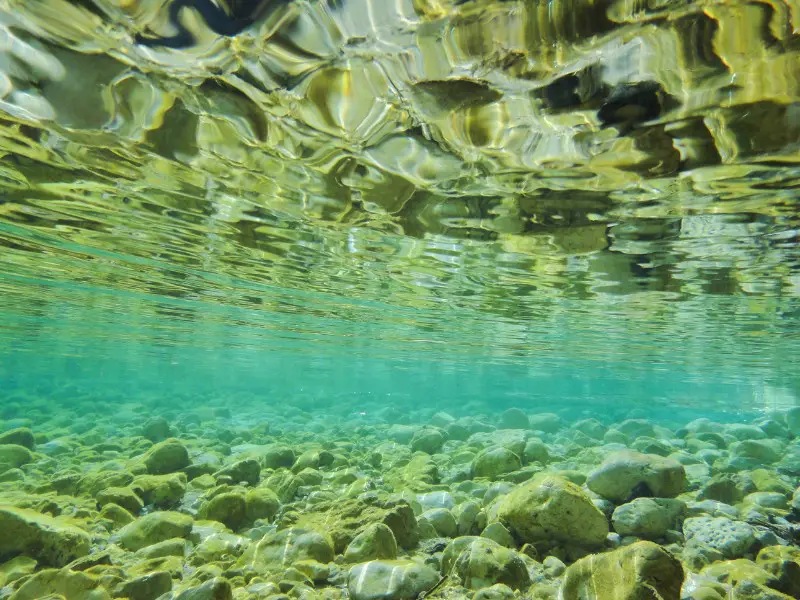
The Type Of Fish Species And Where It Is In The Water Column Influences The Sinker
Your target species is essential to sinker choices. Different fish occur at various depths in the water column; some prefer benthic areas, while others swim all over.
Knowing where the fish is helps you determine where your hookset needs to sit.
For example, you’re more likely to catch catfish and carp on the bottom, while bass and trout are often in the middle to top regions.
Additionally, do your fish prefer structures, open water, fast-flowing areas, etc? The more you know, the better prepared you are for successful fishing.
Asking other anglers is a fantastic way to acquire more knowledge, but don’t be afraid to experiment.
The Type Of Bait, Fishing Gear, And Technique Influence Sinker Choice
Your fishing gear and the technique you employ dictate which sinker is best suited to your needs.
You may want your hook set to move around
if you’re using live bait.
If fishing closer to a structure, you might prefer a bullet or split-shot sinker to keep the bait in one area (to avoid becoming tangled). If you’re trying to cast as far as possible, you might need a heavier sinker to assist you.
Your intended species, the environmental conditions, and the gear/technique are all directly related to the best sinker type. You can’t remove any variable without influencing the others.
Conclusion
Sinkers are essential to your fishing gear and can change the tide in your favor while fishing. While there is no one best sinker, there are many different designs to suit different needs. The type of fish, the environmental conditions, and your technique are essential factors in determining which sinker is best.
- Do You Need An Indicator For Nymph Fishing? - November 16, 2023
- Fishing Safety Tips For Families - September 25, 2023
- What Is The Best Time To Night Fish At A Lake? - September 18, 2023


![Types of Fishing Sinkers [How To Use and Pick the Right One] different types of fishing sinkers](https://irvinelake.net/wp-content/uploads/2022/12/types-of-fishing-sinkers-150x150.jpg)

